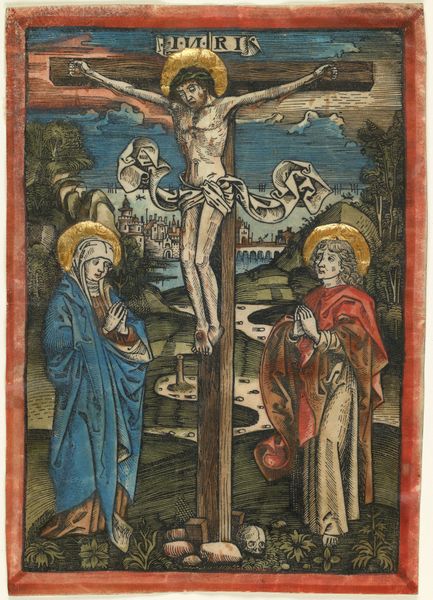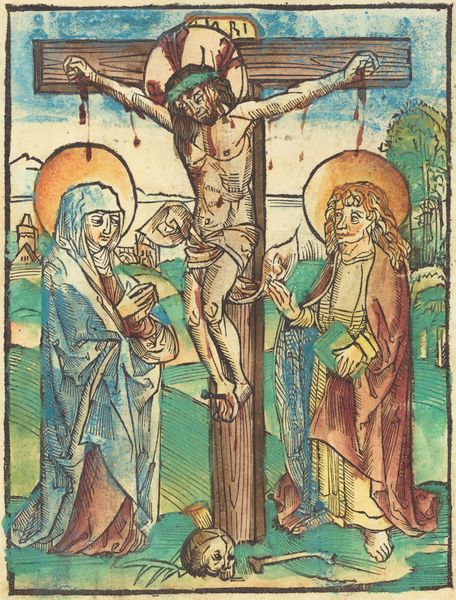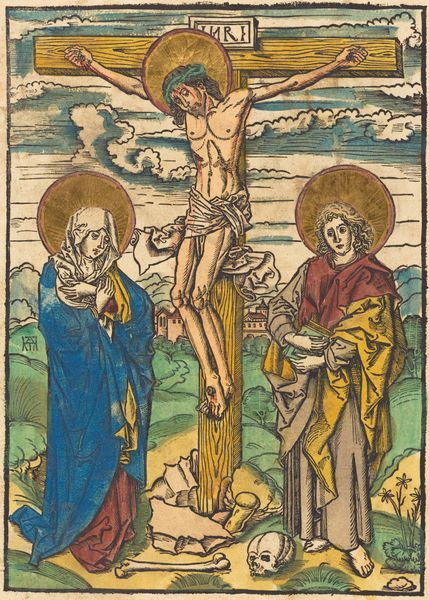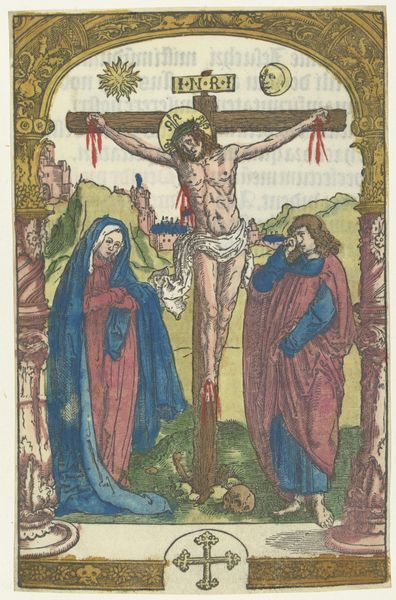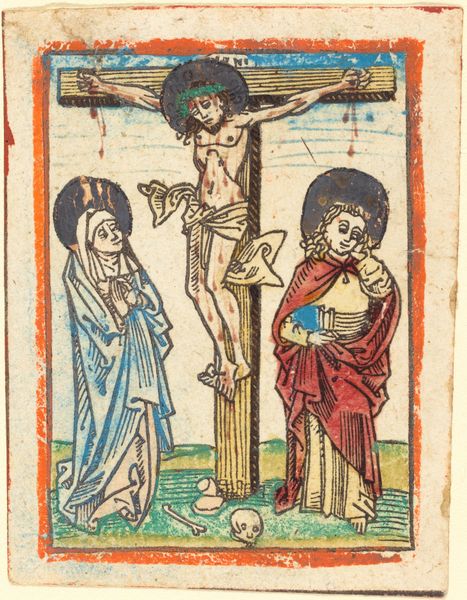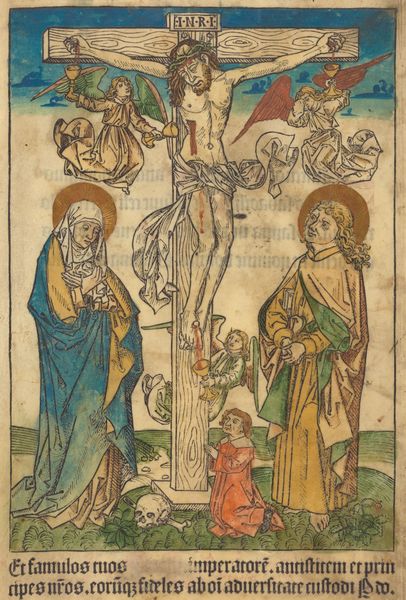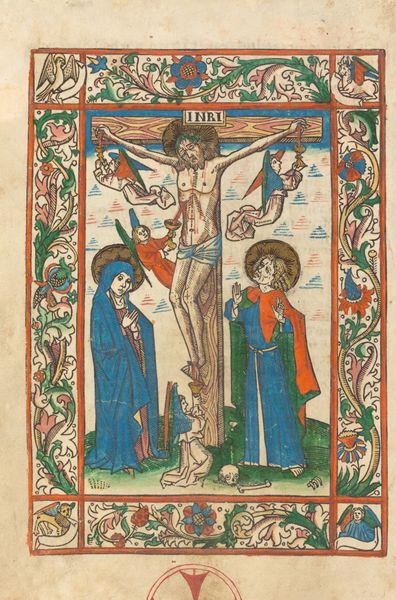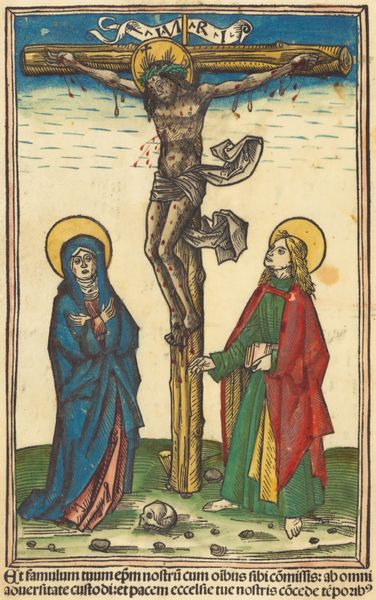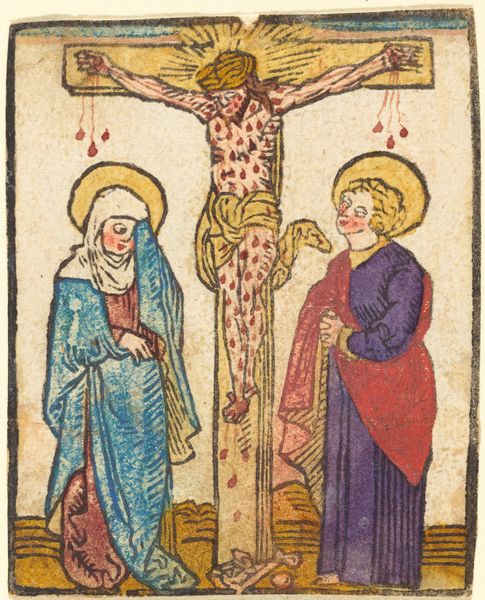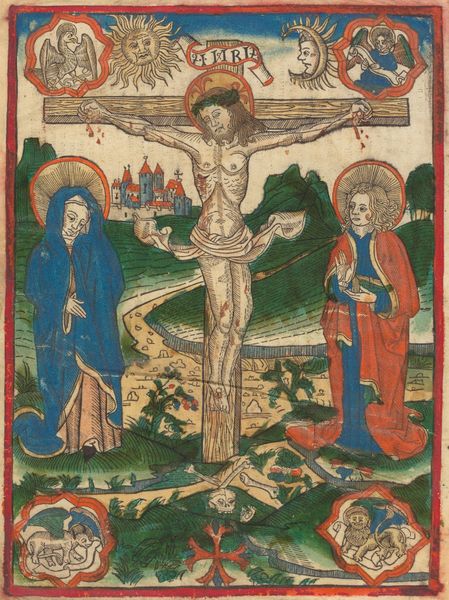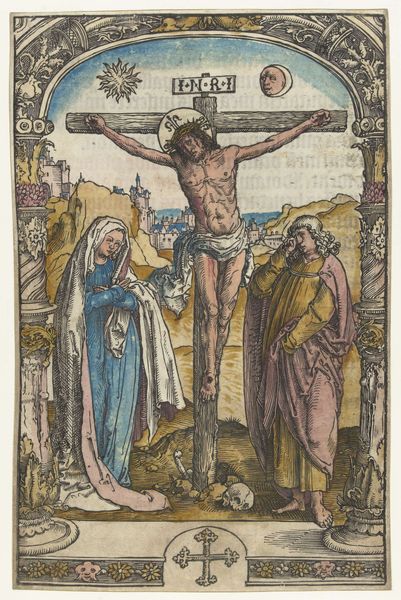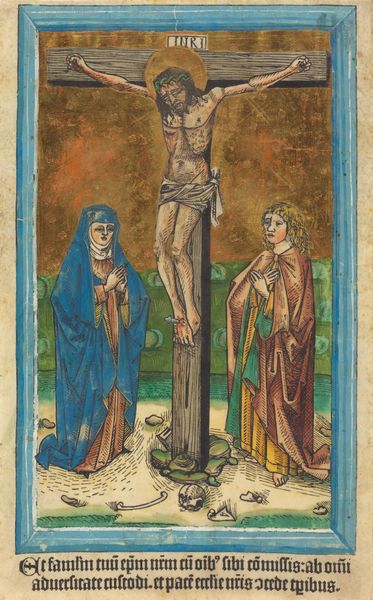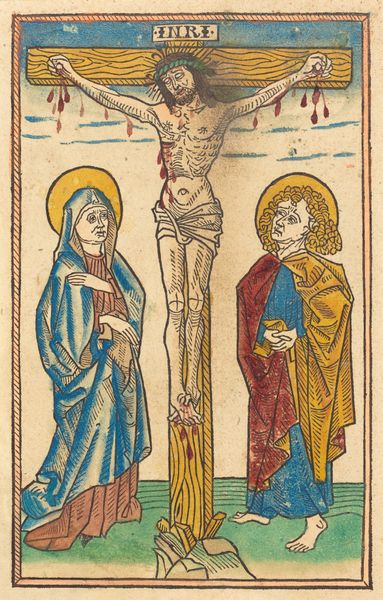
print, woodcut
# print
#
figuration
#
coloured pencil
#
woodcut
#
history-painting
#
northern-renaissance
Copyright: National Gallery of Art: CC0 1.0
Curator: So, let's turn our attention to this striking woodcut from around 1490, titled "Christ on the Cross." It's by an anonymous artist, offering us a poignant look at late 15th-century religious iconography. Editor: Whew, that hits you right in the gut, doesn’t it? Raw and unflinching, even after all this time. It’s like, yeah, death. There it is. And the sky is strangely blank. It emphasizes the isolation, don't you think? Curator: Absolutely. The use of the woodcut medium itself reinforces this feeling, right? Its bold lines and limited color palette contribute to the overall tone of starkness and austerity—common to art of the Northern Renaissance. This aesthetic developed, in part, as a critique of earlier Renaissance humanism. Editor: It's almost unsettling. It's a weird kind of beautiful, though, if that makes any sense. The colours look simple but there's more variation as you zoom in. The almost naive quality amplifies the emotional wallop. Curator: Precisely. This direct emotional appeal was really the intention. Prints such as this served didactic purposes; this was an accessible and affordable way to visualize some of the most important figures and scenes in the Bible. They aided in both personal and collective spiritual reflection and repentance. We see the figures of Christ, Mary, and John, situated above skulls and bones. Editor: And it's tiny, too, which somehow adds to the intimacy, don't you think? Like you're holding a secret horror in your hands. Curator: Interesting, yes. In its original context, though, a print like this could serve as a pocket-sized devotional aid and an object for community building through the mass distribution of religious iconography. Thinking about materiality and modes of reception reminds me how deeply woven politics and piety were in daily life. Editor: Looking at it, I feel oddly empowered. The mess and the sorrow but a glimpse of beauty. Thanks for pointing out some of those things. It's not just about art, but about real life. Curator: Thank you! It has been my honor to help create an informed dialogue with historical art from an intersectional point of view. I agree completely. The narratives held in visual culture and historical events shape our current way of thinking.
Comments
No comments
Be the first to comment and join the conversation on the ultimate creative platform.
